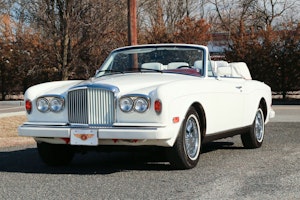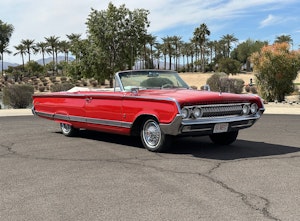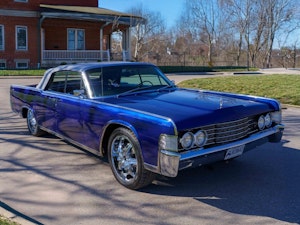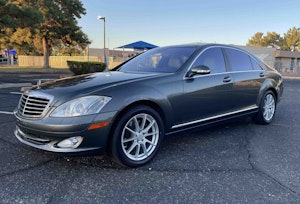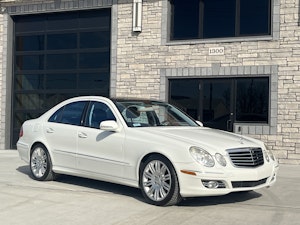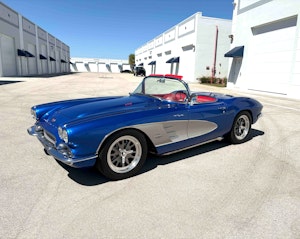Media | Articles
4 Hemi-powered Plymouths you won’t want to miss at auction
Yeah, we’ve all seen the “That thing got a Hemi?” commercial. Heavy duty Rams aside, however, it reveals the Hemi’s impact on automotive culture. The engine symbolizes horsepower, speed, and domination over the competition.
Mecum Auctions has always brought its A-game when it comes to muscle cars at its January auction in Kissimmee, Florida. This year, despite uncertainty in the classic car market and rumors of recession, Mecum still assembled one impressive list of cars. Even apart from the Bullitt Mustang, there are scores of awesome cars to drool over that we’ll see in Florida next month. Since the Hemi reigns king for many muscle car enthusiasts, we picked four of the most significant Hemi-powered Mopars on offer this January.
With these four muscle machines in your driveway, nobody will ask you if “that thing got a Hemi”—they’ll know.
1967 Plymouth Barracuda “Hurst Hemi Under Glass”
20191219182926)
Estimate: $200,000–$300,000
Marketplace
Buy and sell classics with confidence
Hagerty Price Guide: n/a
Without a doubt, the Hurst Hemi Under Glass is one of the most famous Hemi-equipped vehicles on the planet. The original idea was to move the engine to a rear-midship position for better weight transfer. Due to the Barracuda’s large rear window, the 426 Hemi was on display for all to see—hence the “Hemi Under Glass.” The resulting weight formula was biased so heavily to the car’s rear that the Barracuda would do wheel stands on command. This led to the refocusing of the car as an exhibition stunt to promote the Hurst company. With the legendary Bob Riggle behind the wheel, the Hemi Under Glass was wildly popular among spectators and is now a drag racing icon.
The first Hemi Under Glass was produced in 1965, with successive cars built as the Barracuda’s styling was updated. This 1967 is one of the original cars driven by Riggle. It made its rounds through the show circuit and disappeared some time after; it wasn’t until the 1990s that Riggle was tipped off to its whereabouts. Once found, and with its authenticity confirmed, the Barracuda underwent a long restoration. When the restoration was complete, Riggle hit the show circuit with the Hemi Under Glass and the duo wowed crowds just as it did in the ’60s.
If you’re a drag racing fan, the Hemi Under Glass cars are a real treat to see either on the track or off. The last time one was offered publicly was the 1966 Hemi Under Glass five years ago, so this car will surely draw eager fans.
1971 Plymouth ’Cuda Pro Stock
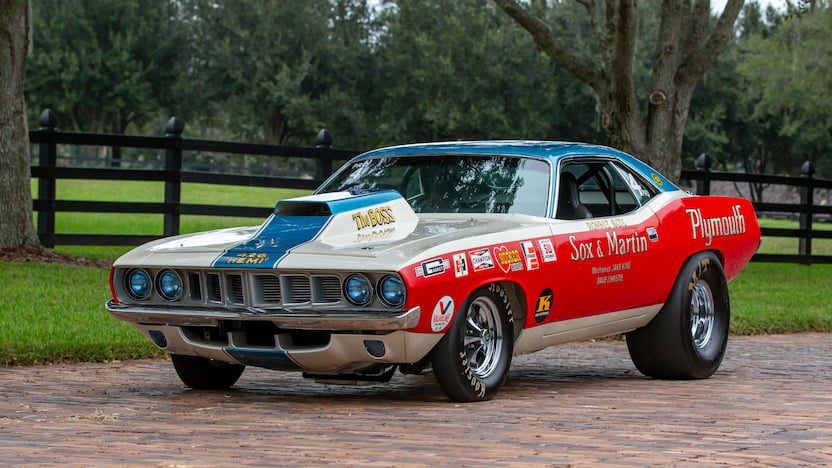
Estimate: $400,000–$600,000
Hagerty Price Guide: n/a
When it comes to drag racing, one of the most legendary names in the business is Sox & Martin. Ronnie Sox and Buddy Martin ran among the most fearsome teams in the Super Stock and Pro Stock classes. Over the course of his career, Sox would win five NHRA championships and his skill at the wheel would earn him the nickname “The Boss” and is occasionally referred to as “Mr. Four-Speed” (although this nickname is also attributed to Herb McCandless). The apex of Sox’s career came in 1971 behind the wheel of a Pro Stock Cuda when he won six of the season’s eight rounds. In fact, this would be Sox’s final NHRA championship title.
This ’Cuda is the very car in which Sox captured the 1971 NHRA championship, and it’s just as special as its driver. The car’s body was acid-dipped and the wheelbase altered for more precise weight distribution. The engine is a special-built 426 with period speed parts, including dual-plug aluminum heads, dual magnetos, and a pair of massive 6214-series Holley Dominators. The restoration of the car is superb and accompanied by extensive documentation; before work began, Dave Christie, the Sox & Martin team fabricator, confirmed the car’s authenticity.
This stunning car appeared at Mecum’s Indianapolis sale in 2016, where it received an offer of $750,000—which, ultimately, wasn’t enough to send it off to a new home. This go-around, the Sox & Martin ’Cuda is offered at no reserve and is bound to put on a show.
1965 Plymouth Belvedere A/FX

Estimate: $400,000–$600,000
Hagerty Price Guide: n/a
These days, “funny cars” are essentially short-wheelbase dragsters with a shell flopped over the chassis. Flopper cars have been around since the mid-’60s, but back then, “funny car” was more of a catch-all term for altered-wheelbase (AWB) drag racers.
For 1965, Chrysler Corporation put all its chips on a lightened, altered-wheelbase funny car to stay competitive against Ford and its new SOHC 427. Six Belvederes went under cutting wheel for the Frankenstein experiment. The front wheels were shoved forward 10 inches and the rear axle was moved up 15 inches for a rear-biased weight distribution. This meant harder launches with less wheelspin. The bodies were then acid-dipped, the glass replaced with Lexan, and bare-bones interiors installed. These cars tipped the scales at under 3000 pounds, a near-impossible number for the time.
This example is one of the original six Frankensteined Belvederes and a rare opportunity for anyone to see an AWB Plymouth outside of a museum or collection. Lurking under the hood is a 426 topped off with aluminum heads and magnesium intake with Hilborn injection. Accompanied with documentation, this car is sure to draw serious attention from buyers and spectators alike who hope to relive the glory days of factory drag racing.
1971 Plymouth GTX

Estimate: $350,000–$450,000
Hagerty Price Guide: $69,900–$175,000
In Mopar land, options are king. Unlike today, when options come bundled in a predetermined package, there was no “Technology Pack” or “Platinum Big Horn LTZ Denali” option to drain your account. If you had cash to burn and wanted the baddest Mopar you could order, you literally had to check the boxes.
What if you checked all the boxes on a ’71 Plymouth order sheet? The resulting GTX is exactly what decorated Vietnam veteran Sergeant Larry Dickson got. The story goes that he didn’t actually order the car himself but managed to get his hands on a sales bank car that sat unsold for a year. Considering that the average 1971 GTX cost $3700, this near-$6600 car was indeed a tough sell. The options list was considerable: 426 Hemi, Super Track Pack, pistol-grip shifter, Air-Grabber hood with tie-downs, a sunroof and much, much, much more.
With all these options, it turns out that this is the most expensive Hemi car ever produced. The GTX would remain with Sgt. Dickson for the rest of his life; later, it found a home in the Wellborn Muscle Car Museum. Now the GTX is up for sale and is expected to bring strong bidding. If you are the muscle car collector who thinks he has it all, you really don’t have it all until you have this car.
Which of these Hemis would you dole out your Christmas cash for? Let us know in the comments section below.
